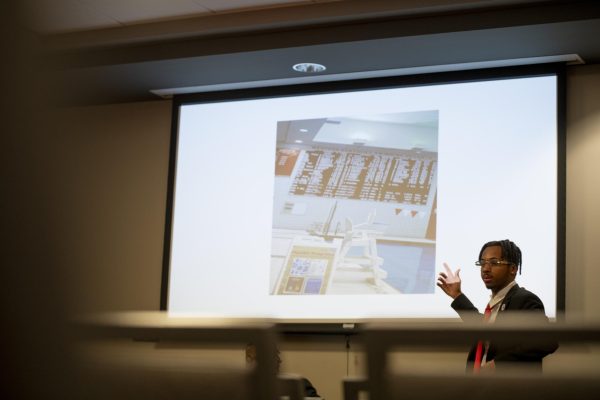Plus/minus hits, misses across state
November 13, 2003
Centre College says it works.
The University of Louisville says it recently adopted it.
The University of Kentucky says they didn’t have it long enough to really know if it worked.
Eastern Kentucky University dropped it.
But Western still doesn’t know what kind of an effect a plus/minus grading system could have on the Hill.
The system may be a new issue for students and faculty on the Hill, but other Kentucky colleges and universities have used it and experienced its pros and cons.
University Senate is expected to vote Nov. 20 on whether the system should be implemented at Western.
John Ward, vice president of Academic Affairs at Centre, said he has been at the college for 14 years, and a grading system using pluses was in effect when he arrived.
Minuses were added to the system six years later, he said.
Before the plus/minus system was in effect, there was a straight number system similar to Western’s at the college, he said.
Ward said when the minuses were added to the grading system, students did show resistance, but they eventually got used to the change.
“The kids most concerned were the very best students,” he said. “After it was adopted, they didn’t think about.”
Despite some grades changing, he said there have been no significant changes in grading for the past fifteen years.
“The end result was an even swap – some grades were higher and some were lower,” he said. “There was no reason to think they did worse – good students get good grades.”
Some students on the Hill are worried about losing their 4.0 grade point average from a grading system change. Centre’s valedictorian usually graduates with a 3.8 or 3.9 GPA, Ward said.
“Very good students get B’s,” he said. “Our students still get into law school and graduate school just the same.”
Ward said the faculty at Centre like the plus/minus grading system because they can better evaluate students and let them know how they could do better in class.
“I think it’s a good grading system,” he said. “I know our students suffered none.”
Ward also said the plus/minus grading system made transcripts easier to read and value.
Dale Billingsley, associate provost at the University of Louisville, said their graduate students have been under a plus/minus grading system for 10 years.
He said the system was applied to undergraduates last fall after professors felt the old grading system was no longer sufficient.
“There was a great deal of resistance from students,” Billingsley said.
The concerns were mostly from “higher-end” students since there was no bonus for an A-plus, he said.
Billingsley said administrators asked scholarship committees to take the change into consideration when distributing scholarships to students who were enrolled under the previous system.
Like the situation Western could be in, the faculty at U of L are not required to use the grading system, he said.
“This creates obvious problems of equity,” he said.
Donald Witt, director of undergraduate admissions at the University of Kentucky, said the plus/minus system was in effect for all undergraduates for a short period of time.
“The goal was to try to show a more distinct representation of a student’s grades,” Witt said.
The School of Architecture and the School of Architectural Design at UK still use the plus/minus system, he said.
In addition, the College of Law and the College of Dentistry at UK use the plus/minus system.
Witt said all other undergraduate programs currently have a straight grading system.
Most students felt it wasn’t beneficial, he said.
Whitt said UK used adequate preparation when originally implementing the plus/minus grading system by discussing the proposal openly at the senate level, within different student organizations, and within different colleges on campus.
He said senate members were active in gathering others’ ideas.
Witt said one of the problems with plus/minus grading was the inconsistency of professors using the grading system within multiple sections of a class.
Plus/minus grading is a type of grading that depends on school size and other factors, Witt said.
“What’s right for one school might not be right for another,” he said.
Katherine Kerr, associate registrar at Murray State University, said they don’t use the plus/minus grading system.
“It has been discussed, but that’s as far as it went,” Kerr said.
Eastern Kentucky University put in a plus/minus system last year but dropped it after a semester, said John Harley, who served on Eastern’s Faculty Senate at the time.
“There was so much controversy that it was dropped,” Harley said in September. “The students overwhelmingly did not like it.”
Bill Swinford, senior associate for public affairs for the Council on Post-Secondary Education, said the CPE does not have a position on the effects of plus/minus grading.
Reach Lindsey Reed at [email protected].

























